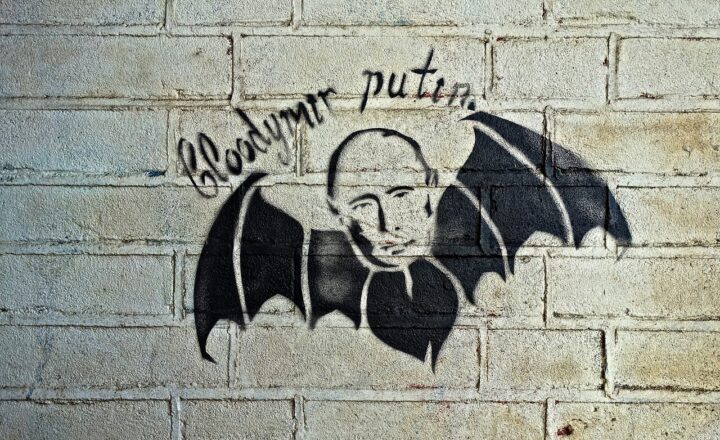Cartoon vs. Reality: The Fascinating World of Animated Truths
November 18, 2024

Cartoons have been a beloved medium for generations, serving as a source of entertainment, education, and cultural commentary. Often perceived as whimsical representations of life, cartoons frequently draw stark contrasts with the realities they depict. In this article, we will explore how animated truths illustrate the beauty, absurdity, and sometimes harsh realities of our world while providing a unique lens through which we can understand complex themes.
1. The Role of Cartoons in Society
Cartoons play a pivotal role in reflecting societal values and beliefs. They serve not only as a medium of entertainment but also as critical tools for social commentary. From classic animated shorts to modern television series, cartoons have been used to challenge societal norms, critique political figures, and address pressing social issues.
For instance, shows like “The Simpsons” and “South Park” boldly address politics, culture, and social unrest, often using humor to dissect serious topics. Despite their comedic tones, these animated series provoke thought and discussion around the themes they tackle. They challenge audiences to reflect on the state of society, prompting conversations that might not happen without a light-hearted catalyst.
2. Cartoon Characters vs. Real-Life Personalities
Cartoon characters are often exaggerated versions of real-life personalities, embodying specific traits to make a point or create humor. For example, characters like Bugs Bunny highlight wit and cunning, while others like Spongebob Squarepants showcase optimism and resilience.
These animated figures often serve as mirrors to reality, dramatizing the very essence of human behavior. Whether it’s the trickster archetype displayed by characters like the Road Runner or the nurturing aspects found in characters like Marge Simpson, these traits resonate with real personalities in our lives.
Often, we find ourselves drawn to characters who reflect qualities we admire or wish to emulate. They become symbols of certain ideals, inspiring us to navigate our paths differently. Conversely, they can also exaggerate negative traits to caution viewers against adopting such behaviors in real life.
3. The Physical Absurdity of Cartoons
One of the most striking features of animated mediums is their ability to portray physical absurdities that would be impossible in real life. Characters can defy the laws of physics, surviving implausible situations with relative ease. This not only invites laughter but also highlights the inherent absurdity of life itself.
For instance, consider the iconic fall of Wile E. Coyote as he tumbles off a cliff. The moment is comically exaggerated. As he falls, he morphs into a flat pancake before springing back to life. This portrayal, while humorous, symbolizes the resilience of the human spirit in the face of adversity. Life, much like a cartoon, often has its ups and downs, and through these animated sequences, we are reminded that failure can be a part of the journey.
Beyond humor, physical absurdities can also serve as metaphors for real-life challenges. Characters experiencing exaggerated mishaps often reflect our own experiences of struggle and resilience, portraying a deeper truth about human experience.
4. Love and Relationships in Animation
Romantic relationships are often key themes explored in cartoons, revealing insights into love, friendship, and companionship. Through colorful animations, deep bonds are illustrated in ways that can resonate with audiences of all ages. Classic animations such as Disney films often depict idealized romantic relationships that evoke emotions and cravings for love and companionship.
However, modern animations tend to portray far more complex and realistic relationships. Shows like “Bob’s Burgers” and “Adventure Time” provide layered explorations of love and companionship, showcasing both the beauty and challenges inherent in human connections. These portrayals capture the essence of romance but also depict the messiness of relationships, offering viewers relatable insights into their own experiences.
By bridging the gap between fantastical portrayals and real emotions, animated narratives around love invite us to reflect on our relationships, encouraging us to embrace the beauty in both the joyful and the chaotic.
5. Educational Value of Cartoons
Beyond entertainment, animated series serve educational purposes, using humor and storytelling to convey complex topics. Cartoons like “Schoolhouse Rock!” have introduced generations of children to subjects like math, history, and grammar in engaging ways. This makes learning fun and accessible, reinforcing that knowledge can be both enjoyable and rewarding.
Recent educational cartoons, such as “Sesame Street” and “Peppa Pig,” continue this tradition, teaching essential life skills and promoting social-emotional learning. These shows prepare young audiences for real-life knowledge, shaping their understanding of the world around them with lessons about empathy, respect, and cooperation.
In this way, cartoons provide bridges between animated creativity and educational outreach, shaping the next generation’s worldview.
6. The Future of Cartoons: Blending Animation with Reality
As technology advances, cartoons are beginning to blend more seamlessly with the real world. Innovations in animation and graphics turn beloved characters into hyper-realistic depictions, paving the way for new storytelling formats that blur the line between cartoon and reality. Shows like “Rick and Morty” exemplify this shift by combining detailed animated arts with complex narratives that explore philosophical themes.
This blending creates a unique viewing experience. Rather than a mere escape from reality, cartoons invite audiences to analyze their own lives through exaggerated storytelling. They turn the spotlight on real-world issues, providing critiques that encourage introspection and action.
Moreover, the rise of augmented and virtual reality experiences has the potential to revolutionize how we engage with animated stories. Future cartoons may allow viewers to step into the animated world, transforming passive watching into immersive experiences where individuals can interact with their favorite characters while grappling with relatable truths about the human condition.
Conclusion
In unraveling the fascinating world of animated truths, we discover that cartoons serve multifaceted roles in society. They entertain, educate, and provoke thought, often reflecting and shaping the complexities of human experiences. Through exaggerated realities and whimsical characters, viewers grapple with themes of love, absurdity, resilience, and learning. As we continue to analyze the dynamic interplay between cartoons and reality, it becomes clear that animated storytelling remains a powerful tool that shapes our understanding of the world and our place within it. Embrace the animated truths, for they hold a mirror to the vibrant spectrum of life, inviting us to turn our gaze inward and explore the deeper meanings that lie beneath the surface of laughter and absurdity.







